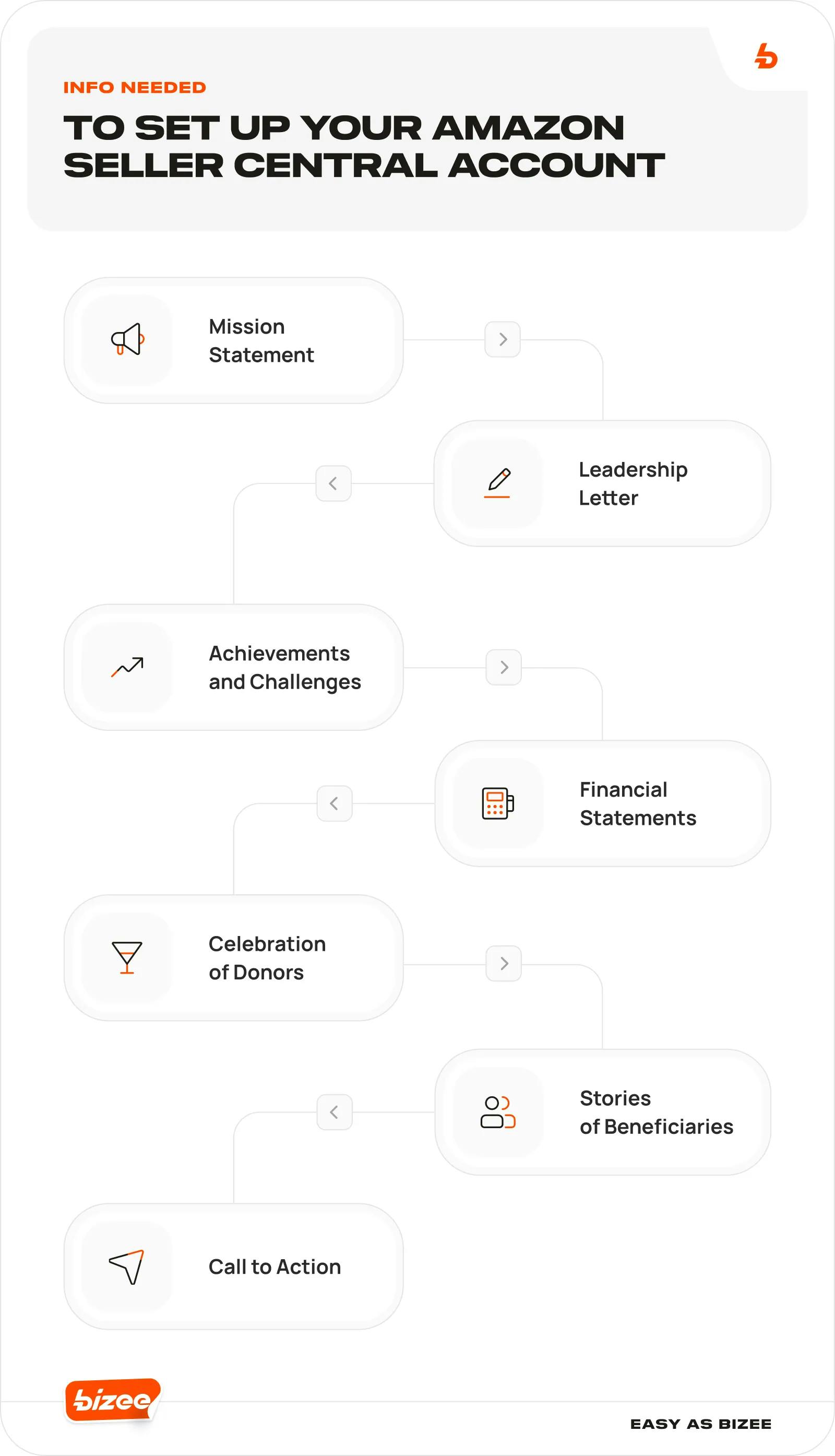Please note: This post contains affiliate links and we may receive a commission if you make a purchase using these links.
Table of Contents:
You want your business to change the world, but in your pursuit, you haven't yet considered what paperwork you're required to file with the government. Many businesses must file annual reports or some type of periodic report with their state — but what about nonprofits?
Here, we've got all the information you need about nonprofit annual reports, your obligations as a nonprofit corporation owner, and how to put together a nonprofit annual report that will move, inspire, and drive change.
What Is a Nonprofit Annual Report?
A nonprofit annual report is not the same as an LLC or corporate annual report. Certain states often require periodic business reports for legal business entities. Those entities must file their reports by the stated deadline. Most often, the reports are annual but can also be biennial.
Annual reports for LLCs and corporations detail important information about a business, like the products or services it sells, who owns it, and how it operates.
A nonprofit annual report, on the other hand, is a document that outlines the nonprofit organization's performance and achievements over the previous year, and it's primarily sent to donors, volunteers, and others who are invested in the success of your nonprofit.
Do You Need to File an Annual Report for Your Nonprofit?
Nonprofits are not required to file annual reports with the state like an LLC or corporation (or any for-profit business) might be.
However, it is standard for most nonprofit organizations to compile and distribute an annual report for their donors each year. This helps keep nonprofits accountable to donors by detailing how the organization is stewarding funds, how it's fulfilling its mission, and what challenges it has overcome or may face in the future. An annual report can also be an important document when looking for grants or funding for your nonprofit.
You might see the term "annual information return" in regard to nonprofits. Not to be confused with an annual report, an annual information return is a required form that's filed with the IRS. An annual information return is similar to a tax return, though nonprofits and exempt organizations do not pay income taxes. However, it's important that you file the correct return paperwork (Form 990, though schedules may vary) by the deadline, or else you may be assessed penalties by the IRS.
Purpose of a Nonprofit Annual Report
The purpose of a nonprofit annual report is really threefold:
- To detail the stewardship of the organization's funds
- To highlight achievements of the past year
- To inspire continued giving to reach future goals
When crafting a nonprofit annual report, you really want it to inform, inspire, and create a catalyst for action. In today's saturated nonprofit landscape, organizations are doing everything possible to ensure their annual report stands out.
Now, instead of a standard booklet, document, or pamphlet, you may see annual reports that are entirely virtual, interactive, or contain audio or video content.
How to Write an Annual Report for a Nonprofit Organization
Ready to put together your own nonprofit annual report? Since there are differences from a standard LLC or corporation annual report, you might wonder what should go into it, but we've got you covered there. Annual reports do not need to be structured in any particular way and are only limited by your time and imagination. However, there are some elements you'll want to be sure to include.

Mission Statement
This is the driving sentiment of your organization and your reason for existing. You want to place your mission statement at the front and center of your report and ensure everything else you include reinforces and aligns with your mission.
This is a great reminder for donors and volunteers of your organization's purpose, and if it's read by anyone unfamiliar with your organization, it lets them know exactly what you stand for.
Letter From the Top
Be sure to include a direct and heartfelt message from your board president, executive director, or the person considered the "face" of the organization. Make sure the letter sets up the theme of the report, bolsters your mission, and sets a positive and uplifting tone.
Achievements From the Year
Clearly outline all of the goals you met or surpassed during the prior year, and be sure to include plenty of details. Donors need to know how their funds were used and love to feel that they contributed to something that made a meaningful impact. Show that impact with plenty of photos, stories, and conversational language.
Data and Financials
Some people love to see the numbers, and some feel their eyes glaze over when they get to the pie charts and graphs. No matter who your readers are, you need to include all the data on how you stewarded the organization's money. Transparency is key — you never want donors to wonder how their dollars are being spent.
Donor Recognition
Celebrating donors is one of the major objectives of a nonprofit annual report. Your donors are what keep your organization going, and they're also what allows you to make a difference in promoting the cause your organization supports.
Make sure your report is full of donor appreciation and donor stories — it means a lot to them, and that could mean everything to your continued success.
Events and Campaigns
Be sure to highlight all the events and campaigns your organization participated in throughout the year. Remember that most donors can't attend every event or be part of every milestone, so they'll appreciate seeing what the organization was up to when they couldn't be around.
It may also inspire them to branch out and offer additional support to another event or upcoming campaign.
Call to Action
Ultimately, you want donors to continue giving. You also want them to — when they're able — increase their giving and inspire others from their own networks to do the same. Be sure you give them a clear way to do that at the end of the report and at various points throughout.
This might include asking them to sign up for new volunteer opportunities, providing them with a link to donate to an upcoming fund or campaign, or asking them to follow your social media channels.
Nonprofit Annual Report Best Practices
Now that you know what needs to be in your report, you've got to know how to put it together. You can find many examples of nonprofit annual reports to get inspired when creating your own. You might also find some really great annual report tools that will help you design something professional and attractive, such as Flipping Book, FlipBuilder, and FlipDocs.
Here are other best practices you can implement when creating your nonprofit annual report:
Be Transparent With the Numbers
You don't want to leave any questions when it comes to the money trail leading from your organization. Present your financial statements as transparently as possible.
While each donor's contribution may be a drop in the bucket toward achieving your big goals, remember that to them, it's everything they can give to support a cause that's near and dear to them. Donors are more likely to continue giving if they can see where their money goes and how it's used to make a real, tangible impact.
Focus on Storytelling
Yes, the numbers are important, but remember that your readers are human beings, not calculators. They're people who truly want to make a difference, and they're ready to put their money where their mouths (and hearts) are.
Use a conversational, narrative approach in your report to hook readers and take them on a journey that will leave them wanting (to do) more. Always remember to put people at the heart of your report.
Express Gratitude
A simple "thank you" is not always enough to thank the people who allow you to continue doing what you do. Make sure your report is jam-packed with gratitude — for the donors, the volunteers, the executive staff, the board ... and especially those your organization is helping.
Present Data in an Appealing Way
Make sure your data is clear and easy to understand. Look at ways to use visual data and interactive charts, so readers can quickly and easily navigate to the information they want.
Instead of spreadsheets or lists of meaningless numbers, put impactful information in eye-catching graphs or charts, and if you're creating a digital report, allow users to set different criteria to dive as deep into the data as they like.
Use an Annual Report Template
If you're not ready to start from scratch, use our nonprofit annual report template. It's a quick way to kickstart your report and make sure you've got all the critical information where it needs to be.
Whether you're growing your nonprofit organization or just getting ready to launch, the tips provided here will help ensure you can seamlessly create an inspiring and informative annual report that will advance your cause. If you're still wondering whether it's time to take the leap and form your nonprofit corporation, Bizee is here to help. Our free guide will help you get started.

Wendi Williams
Wendi is a freelance writer based in Indianapolis, IN, with over a decade of experience writing for a variety of industries from healthcare to manufacturing to nonprofit. When she isn't working on solutions for her clients, she can be found spending time with her kids and husband, working in the garden or doing more writing (of the fiction variety).

like what you’re reading?
Get Fresh Monthly Tips to Start & Grow Your LLC













